Newport Horse Tramways
History
Horse-drawn tramway operation began in Newport at the relatively early date of the 1st February 1875, under the auspices of the Newport Tramways Company Ltd.
The 1.15-mile long line ran roughly southeastwards from Tredegar Place (opposite the Queens Hotel), through Commerical St and Commerical Rd, where it terminated at the junction with Frederick St. The company had hoped to have the terminus further to the south at Church St, but ran into objections from the Tredegar Wharf Company (the landowners); these were however eventually overcome — with the support of Newport Council — the line being extended to Pill Gates near Church St in December 1877. A loop line also existed in the early years — along Bolt St, Dock St and Ruperra St, but this was abandoned in Autumn 1877.
Operation of the tramway was originally contracted to Edmund Perry (a local horse provider), this being converted to a formal lease in April 1881. Around this time, and during the first half of the 1880s however, the company was being heavily criticised for everything from the state of the track to the grubbiness of the tramcars (supposedly Edmund Perry's responsibilities), which probably led to it taking over operation itself at the end of Perry's lease (March 1885).
The company was very profitable, but by the early 1890s, it was clear that the council was intent on controlling tramway development within the town, to which end — and as part of the town's Corporation Bill, which was granted in July 1892 — it had sought powers to construct and operate tramway extensions, as well as to work the existing tramway.
Construction of new corporation-owned horse lines commenced in early 1894, and on the 30th July 1894, the corporation took over the existing horse line, though it chose not to work the system itself, instead leasing operation to Solomon Andrews and Son. The latter was acting on behalf of the South Wales Property, Machinery and Carriage Company Ltd, a company which he owned. It seems likely, though not certain, that the operating assets (e.g., tramcars, horses, depot etc.) acquired from the NTCo were sold to Solomon Andrews and Son.
The corporation continued building extensions to the horse tramway until late 1901, the last expressly constructed for eventual conversion to electric traction. This took the horse tramway to around 5.6 miles, comprising lines: southwards from Newport Bridge to Pill; northwards from Newport Bridge along Malpas Rd to Prospect St; northeastwards along Caerleon Rd to Somerset Rd, and along Church Rd to Duckpool Rd; eastwards along Chepstow Rd to the Cross Hands Hotel; and southeastwards along Corporation Rd to Spytty Rd.
With Solomon Andrews & Son making it clear that they did not wish to operate the tramway beyond the end of its 7-year lease, the corporation took over itself, working the horse tramway from the 30th July 1901. Conversion to electric traction commenced in 1902, the first electric service running on the 9th of April 1903, and the last horse tram service on the 9th April 1903.
Uniforms
As outlined above, Newport's horse tramway system had a complicated operational history, commencing with the Newport Tramways Company in 1875, and though remaining in their hands until the corporation takeover of 1894, for four years (between 1881-1885) it was leased out to a local horse provider (Edmund Perry). Following the corporation takeover, the corporation leased opeartion to Solomon Andrews and Son, before finally taking over itself in 1901.
Although photos taken prior to the 1894 corporation takeover appear not to have survived, the photographic record afterwards is relatively rich, clearly showing that drivers and conductors working these services, irrespective of whether employed by Solomon Andrews and Son or the corporation, wore robust but informal attire, comprising heavy jackets, shirt and tie (usually) and the fashionable headgear of the day, with bowler hats, flat caps and straw boaters all in evidence. There is no reason to think that the situation was any different prior to 1894.
Several photographs suggest that a licence was worn, though they are tantalisingly indistinct, making it difficult to know whether the surviving licences below are the same pattern, though it seems reasonably likely.
Further reading
For a history of the Newport's tramways, see: 'Trams and Buses of Newport — 1845 to 1981' by D B Thomas and E A Thomas; The Starling Press Limited (1982).
Images
Horse tram drivers and conductors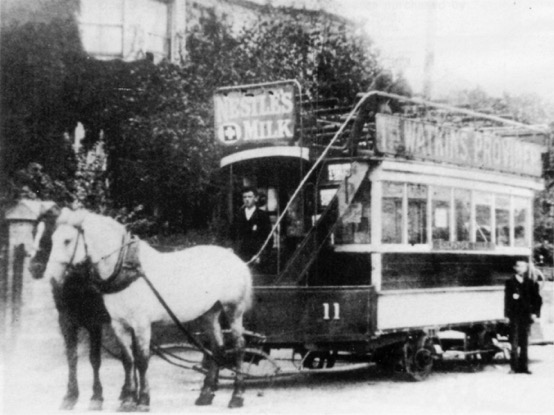
A poor image, but one which shows a horsecar (No 11) during the period that the system was being worked by Solomon Andrews and Son (on behalf of the corporation). The vehicle is pictured at the Cross Hands terminus on the Chepstow Rd route, and though undated, is thought to have been taken around 1895. The driver and conductor are wearing informal attire, and both appear to have a badge/licence on their jackets, possibly the same type as that depicted below. Photo courtesy of the Tramways and Light Railway Society, with thanks to David Voice.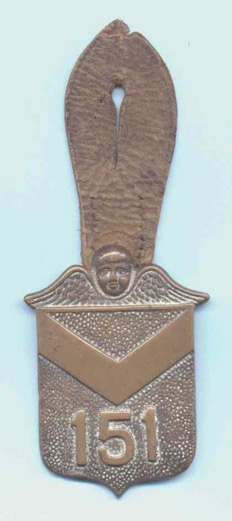
County Borough of Newport licence, No 151 — brass; probably the type worn by horse tram drivers and conductors. With thanks to the Stephen Howarth Collection.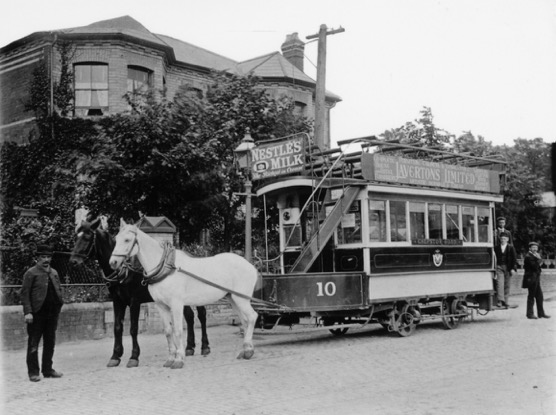
Tramcar No 10 stands at the Cross Hands terminus around 1902, i.e., during the period when the corporation worked the services. Both the driver and the conductor (on the rear platform in a flat cap) are wearing informal attire. Photo courtesy of the Tramways and Light Railway Society, with thanks to David Voice.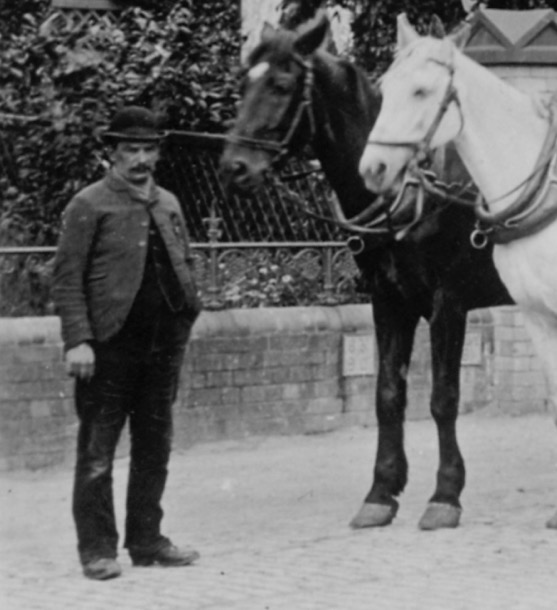
A blow-up of the above photo showing the driver, whose attire can best be described as utilitarian.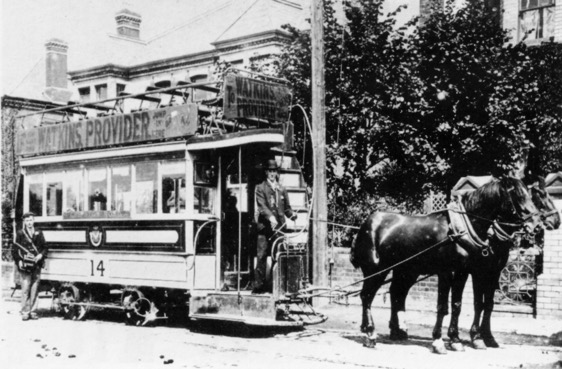
Another late shot at Cross Hands on Chepstow Rd, believed to have been taken around 1902; both men are wearing informal attire. Photo courtesy of the Tramways and Light Railway Society, with thanks to David Voice.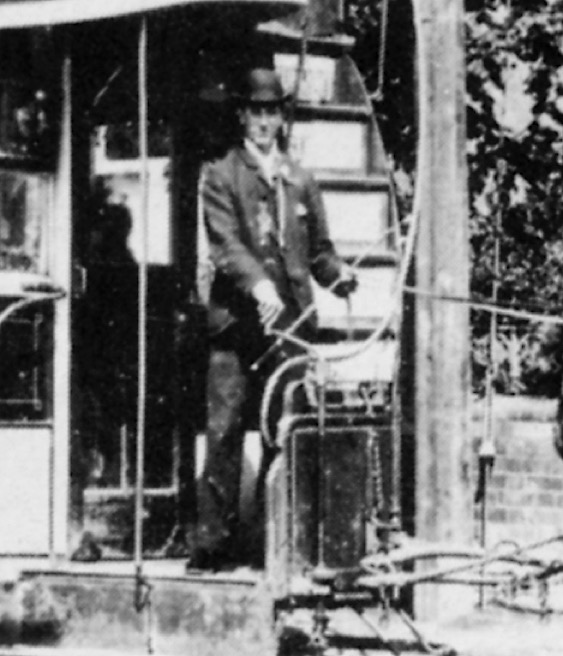
A blow-up of the above photo showing the driver, who appears to be wearing a licence on the right-hand side of his jacket.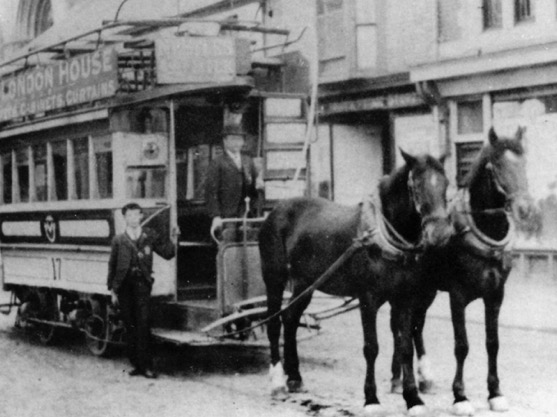
Horsecar No 17 stands in Commercial Rd — photo undated, but thought to have been taken late in the tramway's life, circa 1902. Although of poor quality, it again hints at a licence being worn (on the left-hand side of the conductor's jacket). Photo courtesy of the Tramways and Light Railway Society, with thanks to David Voice.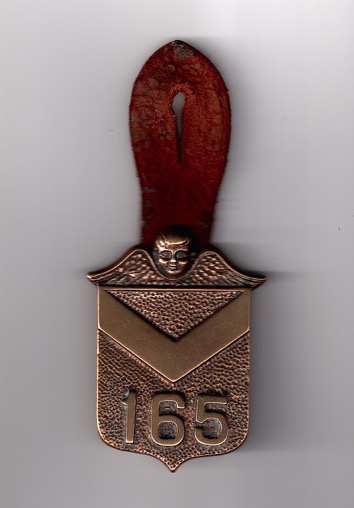
Another surviving licence, this time No 165. Photo courtesy of Bob Morgan.